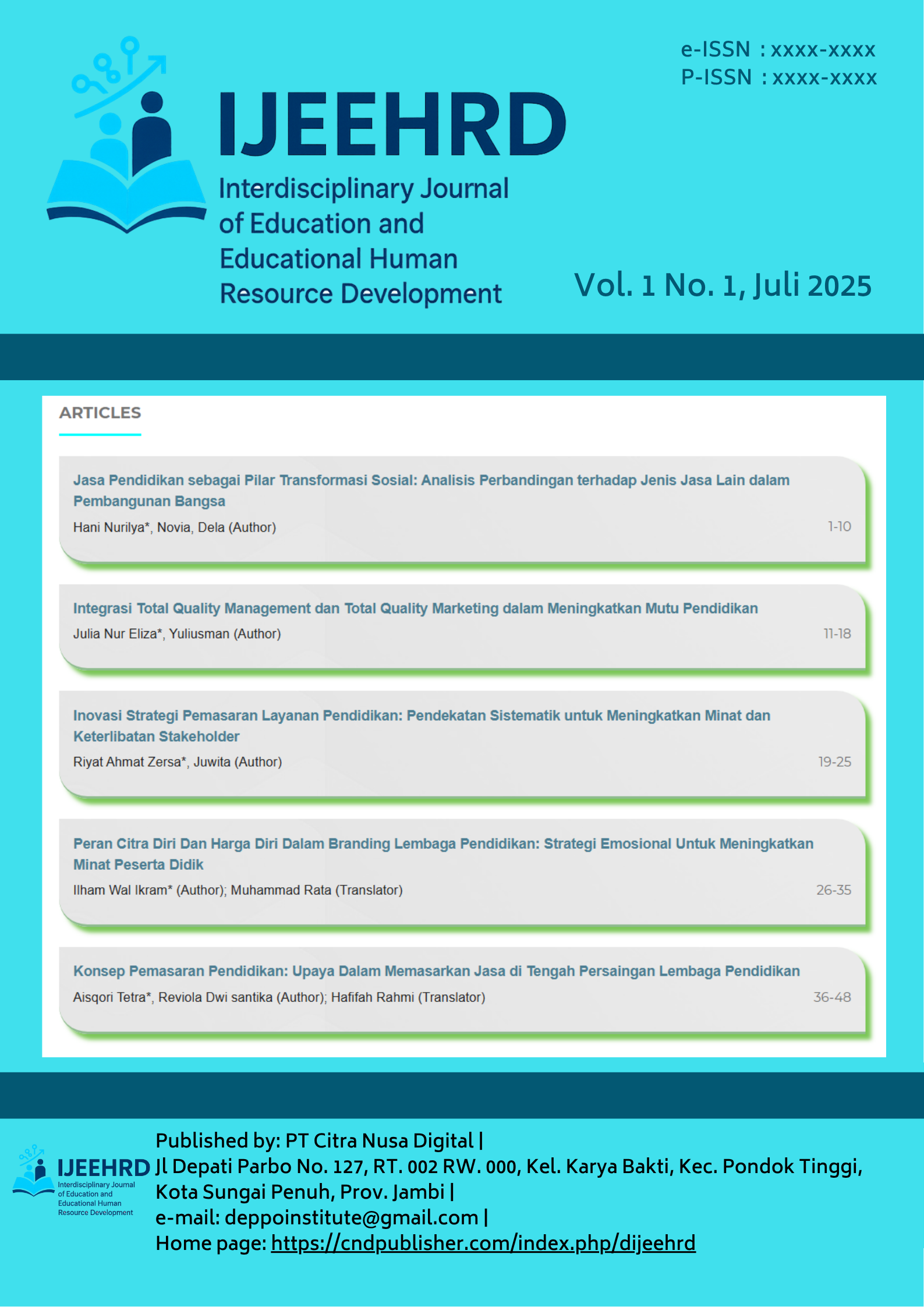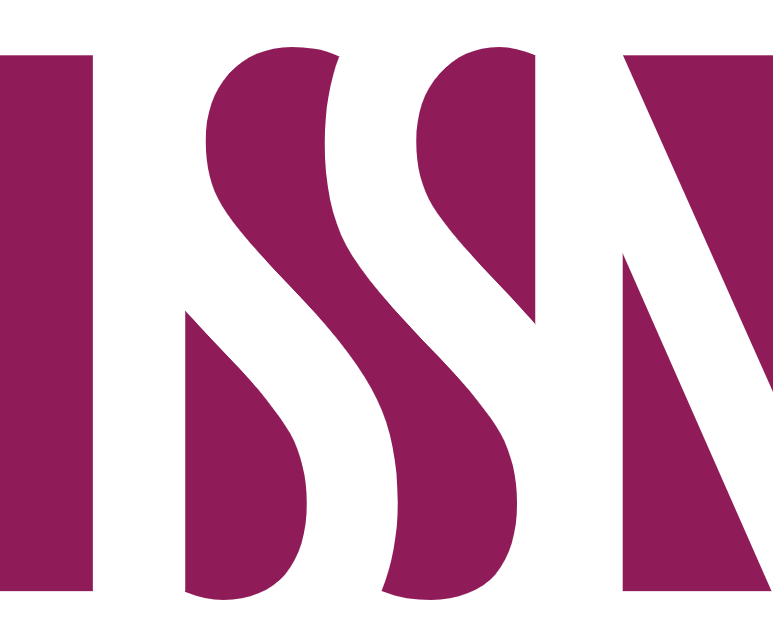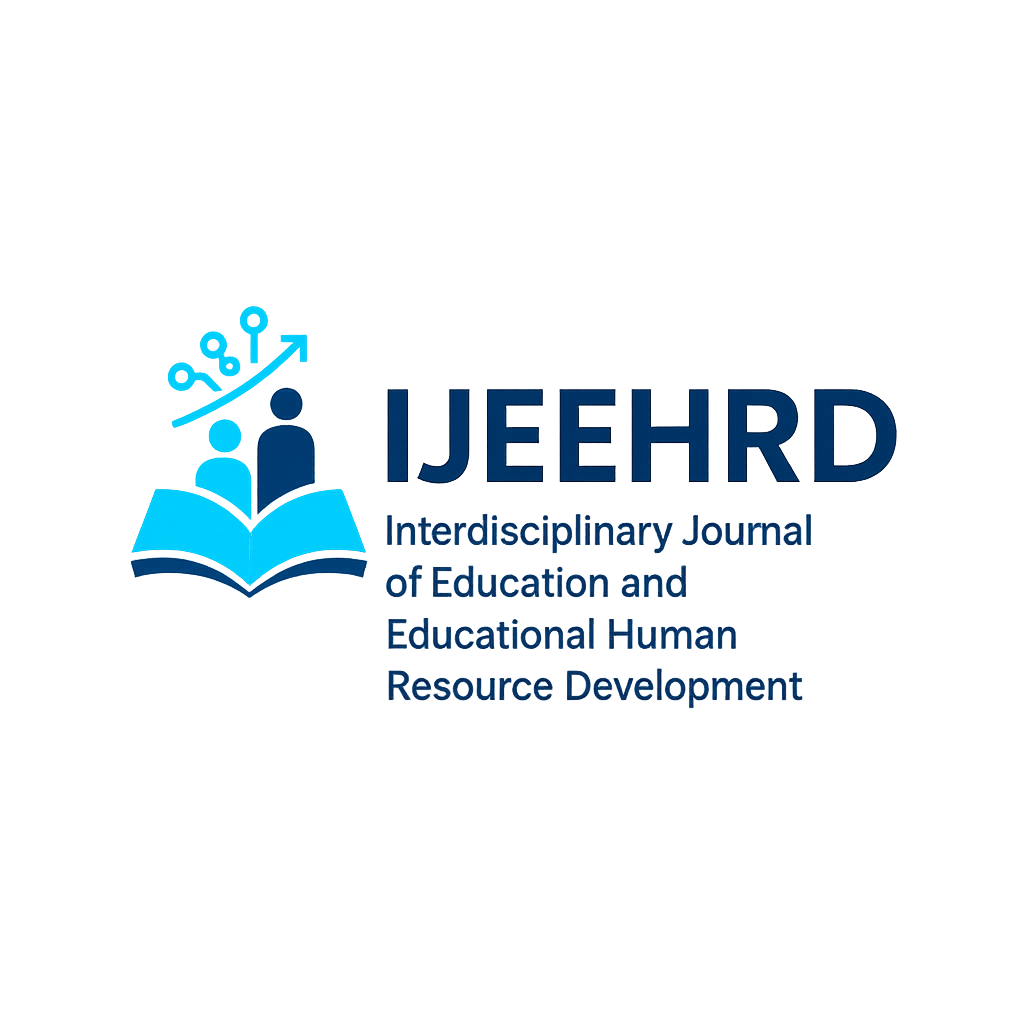Jasa Pendidikan sebagai Pilar Transformasi Sosial: Analisis Perbandingan terhadap Jenis Jasa Lain dalam Pembangunan Bangsa
Keywords:
educational services, social development, human resources, comparative services, social transformationAbstract
This study aims to examine the fundamental differences between education services and other types of services and highlight the strategic contribution of education in social and economic development. Using a qualitative approach through the literature study method, data was collected from various scientific literature related to the service sector, particularly educational services. The results show that education services have unique characteristics that are long-term oriented, such as the development of individual skills, character and competitiveness that have a direct impact on improving the quality of life and productivity of society. Unlike other services that tend to offer instant solutions, education produces deep and sustainable transformative change. The findings confirm the importance of placing education as a priority sector in national development policy, given its role in creating excellent human resources and strengthening social structures. The study also adds to the theoretical understanding of the differentiation of education services in the landscape of public service and nation-building.
References
Agustina, A. (2020). Peran Pendidikan dalam Pembangunan Sumber Daya Manusia. Jurnal Pendidikan Indonesia, 16(2), 45–58.
Becker, G. S. (2020). Human Capital: A Theoretical and Empirical Analysis with Special Reference to Education. University of Chicago Press.
Brown, S., & Green, T. (2023). Educational Contributions to Social Change: An Analysis of Long-Term Impacts. Journal of Social Development, 40(3), 102–118.
Carnoy, M. (2020). Education and Social Transformation: The Global Context. Comparative Education Review, 64(4), 505–527.
Durkheim, E. (1997). The Division of Labor in Society. Free Press.
Fadila, F., Samin, S., & Zebua, A. M. (2023). Profesionalisme Guru Daerah Terpencil (Studi Kasus SDN 209/III Masgo Jaya). Leader: Jurnal Manajemen Pendidikan Islam, 1(2), 100–111.
Fernandez, P. (2022). Educational Services and Their Unique Characteristics in Comparison to Other Service Sectors. International Journal of Business and Education, 35(3pp), 67–79.
Harris, R. (2022). The Evolution of Teaching Methods in Higher Education: A Global Perspective. Cambridge University Press.
Johnson, M. (2021). The Role of Education in Economic Growth: A Global Perspective. International Journal of Economics and Education, 39(2pp), 225–239.
Lucas, R. E. B. (2022). Education and Economic Development: An Integrated Approach. Journal of Economic Development, 47(2), 1–28.
Park, D., Kim, H., & Lee, J. (2023). The Effect of Education on Environmental Awareness and Social Responsibility. Environmental Education Journal, 33(1), 89–105.
Prasetyo, E. (2021). Analisis Perbandingan Jasa Pendidikan dan Jasa Lainnya. Jurnal Ekonomi dan Pendidikan, 21(1), 89–102.
Rini, E. (2021). Pengaruh Kualitas Pendidikan terhadap Pertumbuhan Ekonomi: Perspektif Indonesia. Jurnal Ekonomi dan Pendidikan, 29(3), 45–58.
Roberts, L., Johnson, T., & Thompson, A. (2020). The Role of Higher Education in Economic Growth: Insights from Global Data. Economic Review, 38(4), 56–72.
Sen, A. (1999). Development as Freedom. Oxford University Press.
Simamora, A. (2020). Pendidikan dan Pembangunan Ekonomi: Studi Kasus di Indonesia. Jurnal Ekonomi dan Pendidikan, 29(1), 90–102.
Sutrisno, S. (2021). Teori Pendidikan dalam Perspektif Sosial. Pustaka Akademika.
Thompson, J. (2022). Teaching for the Future: The Need for Long-Term Educational Strategies. Oxford University Press.
Widodo, S. (2016). Pendidikan sebagai Pilar Pembangunan: Dampaknya pada Sumber Daya Manusia. Jurnal Ilmu Pendidikan, 21(1), 67–80.
Yulianti, A. (2022). Peran Pendidikan Terjangkau dalam Mengurangi Kesenjangan Sosial di Indonesia. Jurnal Sosial dan Pendidikan, 30(1), 11–25.
Zhang, Y. (2022). Education as a Long-Term Investment: A Comparative Study with Other Sectors. International Journal of Educational Policy, 29(1), 14–27.












